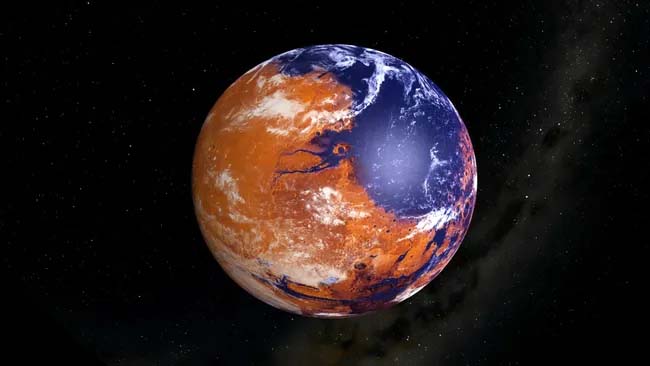Science: Every day we’re getting closer to finding out whether there was ever life on Mars — or even if there ever was. Recently, scientists studying data from NASA’s Curiosity rover found new information about how Mars may have changed from a potentially habitable, water-rich planet to a completely uninhabitable desert. Curiosity has been experimenting on rocks as it passed through Gale Crater on Mars. Using its Sample Analysis at Mars (SAM) and Tunable Laser Spectrometer (TLS) instruments, the rover has heated rock samples to analyze the gases produced. While performing this task on carbon-containing minerals, or carbonates, that often serve as climate records, Curiosity revealed an isotopic composition that suggests two possible climate scenarios in Mars’ past.
In the first, the carbonates may have formed through repeated wet-dry cycles, suggesting extreme evaporation. In the second, the carbonates may have formed in extremely salty, extremely cold water. “These formation mechanisms represent two different climate regimes that could present different habitability scenarios,” NASA Goddard’s Jennifer Stern, who is a co-author of a paper on the research, said in a statement. “Wet-dry cycling would indicate a change between a more habitable and a less habitable environment, while cryogenic temperatures in Mars’ mid-latitudes would indicate a less habitable environment, where most of the water is locked up in ice and not available for chemistry or biology, and what is there is extremely salty and unfriendly to life.”
” Both of these scenarios are not new concepts. Other evidence on Mars, from certain rock formations to the presence of specific minerals, supports both. But this particular study represents the first time that isotopic evidence from rock samples supports them. But there’s some bad news with these results. “Our samples are not consistent with an ancient environment that would have supported life (a biosphere) on the surface of Mars,” said NASA Goddard’s David Burt, who is the lead author of the paper. “However this does not rule out the possibility of an underground biosphere or a surface biosphere that began and ended before these carbonates formed.”
